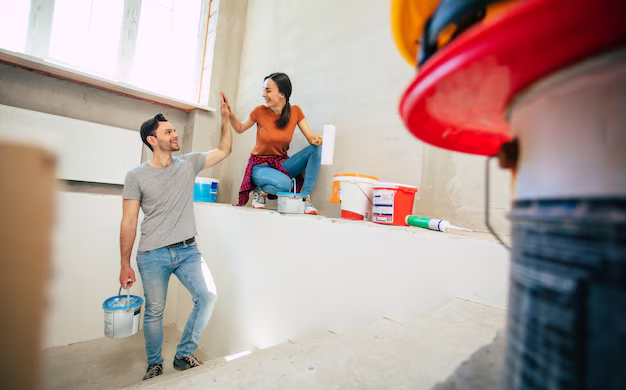What You Need to Know About Federal Housing Improvement Grants
Home improvement can be an exciting but often expensive venture. If you’re a homeowner looking to make necessary upgrades but struggling with the costs, you might be interested to know about the Federal Housing Improvement Grants. Understanding these grants and their availability could ease the financial burden significantly.
Understanding Federal Housing Authority Assistance
The Federal Housing Authority (FHA) is primarily known for offering mortgage insurance rather than direct grant assistance for home improvement. However, knowing their role can highlight other paths to potential financial aid. While the FHA itself doesn’t provide home improvement grants, it does facilitate certain loans that could help meet renovation needs.
One such opportunity is the FHA 203(k) loan, which can be beneficial for those looking to purchase homes in need of repair and for current homeowners wanting to finance home improvements. This loan provides the funds for purchase or refinance and the costs of home renovations under a single mortgage.
Government Grants and Alternatives
For grants specifically aimed at home improvement, you need to explore other government programs outside the FHA. Programs such as the Rural Housing Repair Loans and Grants from the U.S. Department of Agriculture offer financial aid specifically to elderly homeowners in rural areas. These grants are designed for minor repairs and to enhance safety and health standards in homes.
Another potential opportunity comes from the Department of Housing and Urban Development (HUD), which, through local Community Development Block Grants (CDBG), provides grants to improve housing conditions within the community. Contacting your local government offices can provide insights into these available resources.
Broader Financial Assistance Options
If conventional loans and grants don't fit your needs, there are other financial strategies to explore:
Home Equity Loans or Home Equity Lines of Credit (HELOC): Tapping into the equity of your home can provide the necessary funds for renovations at relatively low-interest rates.
Personal Loans: For smaller projects, unsecured personal loans can be a fast and flexible option, though they might come with higher interest rates.
Credit Card Solutions: Leveraging credit cards with promotional APR offers can make short-term borrowing a viable option, especially if you plan to repay the debt quickly.
Considering Educational and Other Grants
It’s also wise to think broader when considering financial aid for home improvement. Educational and vocational grant opportunities, especially those targeted at enhancing homeowner skills in renovation or energy efficiency improvements, could indirectly contribute financial relief by reducing overall costs.
Educational workshops often offer grants for courses in sustainable building practices, which can both improve your home and increase its energy efficiency, resulting in long-term savings.
Final Thoughts
Navigating the myriad of options for funding home improvements can seem overwhelming, but understanding what's available—and how to access it—empowers you to make informed decisions. Whether it’s through federal loans, grants, or other financial strategies, these resources can turn your dream renovation projects into realities without straining your finances.
Here’s a concise guide to some key financial assistance options:
- 🏡 FHA 203(k) Loan: Consolidates purchase and renovation costs.
- 🌾 USDA Rural Repair Grants: For elderly homeowners in rural regions.
- 🏘️ HUD Community Grants: Check local availability for community housing improvements.
- 💰 Home Equity Solutions: Consider loans or lines of credit against home equity.
- 📈 Personal Loans: Quick option for minor renovations.
- 💳 Credit Promotions: Short-term borrowing with credit card offers.
- 📚 Educational Grants: Explore courses on energy efficiency and sustainability.
Taking advantage of these opportunities can significantly reduce the financial pressure associated with home improvements and lead you toward a more comfortable living space.
